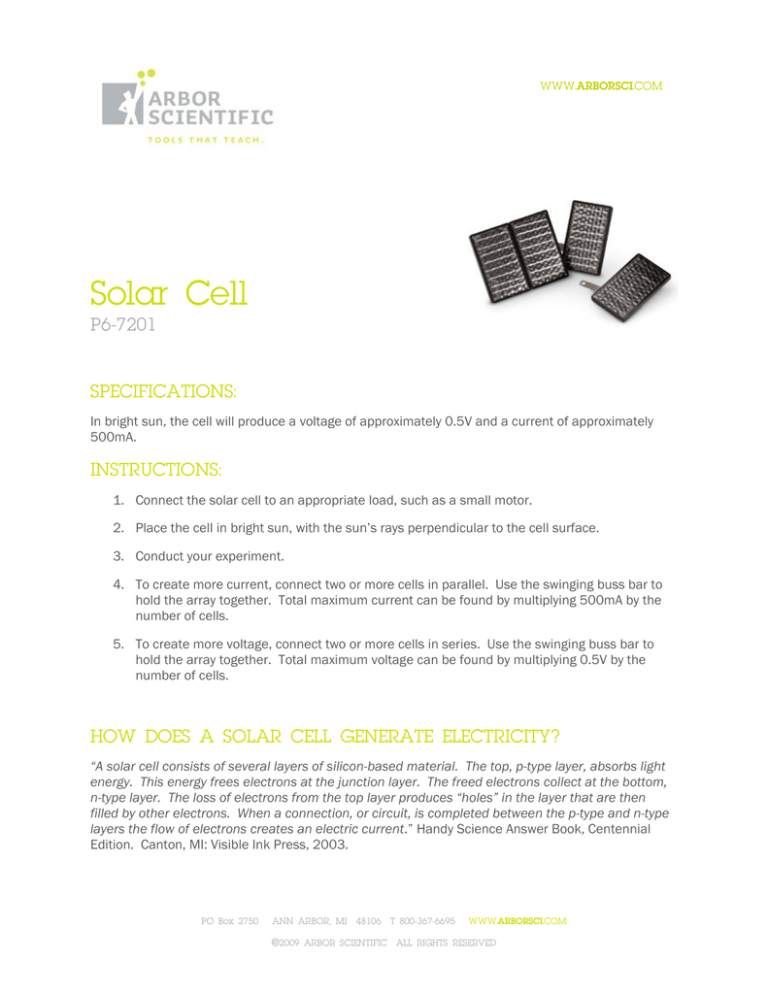
WWW.ARBORSCI.COM
Solar Cell
P6-7201
SPECIFICATIONS:
In bright sun, the cell will produce a voltage of approximately 0.5V and a current of approximately
500mA.
INSTRUCTIONS:
1. Connect the solar cell to an appropriate load, such as a small motor.
2. Place the cell in bright sun, with the sun’s rays perpendicular to the cell surface.
3. Conduct your experiment.
4. To create more current, connect two or more cells in parallel. Use the swinging buss bar to
hold the array together. Total maximum current can be found by multiplying 500mA by the
number of cells.
5. To create more voltage, connect two or more cells in series. Use the swinging buss bar to
hold the array together. Total maximum voltage can be found by multiplying 0.5V by the
number of cells.
HOW DOES A SOLAR CELL GENERATE ELECTRICITY?
“A solar cell consists of several layers of silicon-based material. The top, p-type layer, absorbs light
energy. This energy frees electrons at the junction layer. The freed electrons collect at the bottom,
n-type layer. The loss of electrons from the top layer produces “holes” in the layer that are then
filled by other electrons. When a connection, or circuit, is completed between the p-type and n-type
layers the flow of electrons creates an electric current.” Handy Science Answer Book, Centennial
Edition. Canton, MI: Visible Ink Press, 2003.
PO Box 2750
ANN ARBOR, MI 48106 T 800-367-6695
WWW.ARBORSCI.COM
©2009 ARBOR SCIENTIFIC ALL RIGHTS RESERVED
RELATED PRODUCTS:
Fuel Cell Car Kit (P6-6000). Use solar energy for electrolysis of water. The hydrogen produced
becomes fuel for a working fuel cell and a propulsion source for a model car.
Digital Multimeter (P6-8015). Fully functional multimeter to measure voltage, current, and more.
Great for student electronics projects.
Mini Alligator Leads (P4-3000). Pack of ten 24” leads.
Handy Science Answer Book (P8-0260).
PO Box 2750
ANN ARBOR, MI 48106 T 800-367-6695
WWW.ARBORSCI.COM
©2009 ARBOR SCIENTIFIC ALL RIGHTS RESERVED



